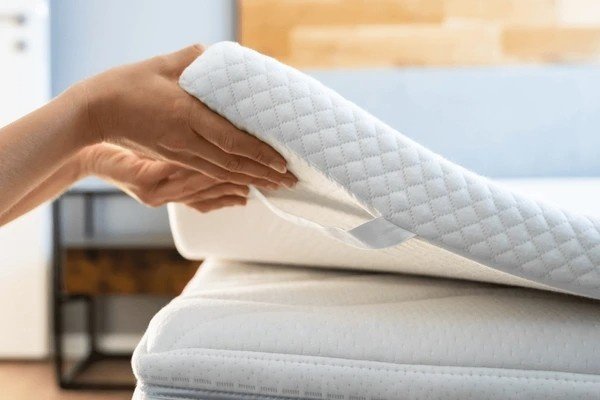Choosing a mattress isn’t just a purchase; it’s an investment in your sleep, health, and overall well-being. With so many options available, deciding which mattress best suits your needs can feel overwhelming. I’ve been there, standing in a store or scrolling through endless online reviews, wondering what truly matters. Through research and experience, I’ve learned how to break down the process into manageable steps. Let me guide you through choosing the right mattress—one that fits your lifestyle and ensures better sleep quality.
Table of Contents
Understanding Mattress Types
The first step is knowing the main types of mattresses available. Each type has distinct features, and understanding them helps narrow your choices. Here are the common mattress types:
| Mattress Type | Description | Best For |
|---|---|---|
| Innerspring | Features coils for support and a thin comfort layer. Offers firm support and breathability. | Back sleepers, people who prefer firm support. |
| Memory Foam | Contours to the body by responding to heat and pressure. Offers excellent motion isolation. | Side sleepers, couples, people with joint pain. |
| Latex | Made from natural or synthetic latex. Provides bouncy, responsive support and durability. | Eco-conscious buyers, people with allergies. |
| Hybrid | Combines coils with foam or latex layers. Offers a balance of support and comfort. | Combination sleepers, couples. |
| Airbed | Uses adjustable air chambers for customizable firmness. | Couples with differing preferences, people needing adjustability. |
My Experience
I found that understanding these types helped me focus on the features I value most. For instance, I needed something with good motion isolation, so I ruled out innerspring mattresses early.
Key Factors to Consider
When shopping for a mattress, several factors influence your choice. Each plays a role in how comfortable and supportive the mattress feels over time. Let’s dive deeper into these aspects.
1. Sleeping Position
Your sleeping position determines the level of support and pressure relief you need. Here’s how it breaks down:
| Sleeping Position | Mattress Features Needed | Suggested Types |
|---|---|---|
| Back Sleeper | Medium-firm support to maintain spine alignment. | Innerspring, Hybrid. |
| Side Sleeper | Softer surface for pressure point relief. | Memory Foam, Latex. |
| Stomach Sleeper | Firm surface to prevent back arching. | Innerspring, Firm Latex. |
| Combination | Responsive surface for easy movement. | Hybrid, Latex. |
Personally, I’m a side sleeper. I opted for a memory foam mattress that supports my shoulders and hips without making me feel stuck.
2. Body Weight
Weight affects how a mattress feels and how much support it provides. Lighter individuals might prefer softer mattresses, while heavier people need firmer options to avoid sinking too deeply.
| Weight Category | Mattress Firmness |
|---|---|
| Lightweight (<130 lbs) | Soft to Medium. |
| Average (130-230 lbs) | Medium to Medium-Firm. |
| Heavyweight (>230 lbs) | Firm, supportive. |
3. Firmness
Mattress firmness is rated on a scale of 1 (softest) to 10 (firmest). Most people prefer a medium-firm mattress (5-7) because it balances support and comfort.
Pro Tip
When testing firmness, lie down in your usual sleep position. Spend at least 10 minutes on each mattress to get an accurate feel.
Materials and Durability
The materials used in a mattress impact its durability, comfort, and maintenance. Here’s an overview of common materials:
| Material | Benefits | Considerations |
|---|---|---|
| Foam | Excellent contouring, motion isolation. | Can retain heat. |
| Latex | Eco-friendly, durable, and bouncy. | Higher cost. |
| Coils | Breathable and supportive. | Can be noisy over time. |
| Hybrid | Combines benefits of foam and coils. | Higher price point. |
| Natural Fibers | Organic and chemical-free options. | Expensive, may require special care. |
Trial Periods and Warranties
Most reputable mattress brands offer trial periods and warranties. A trial period lets you test the mattress in your home for several nights. Warranties protect against manufacturing defects.
| Feature | Importance |
|---|---|
| Trial Period | Allows you to return or exchange the mattress if it’s not a good fit. Aim for 90 days or more. |
| Warranty | Covers defects like sagging or broken coils. Look for a 10-year minimum. |
In my case, I tested a mattress with a 120-night trial. It took me about a month to decide it was the right choice.
Special Considerations
Some situations call for extra care when choosing a mattress:
1. Allergies
If you’re sensitive to dust mites or chemicals, opt for hypoallergenic materials like natural latex or organic cotton.
2. Couples
Couples should look for mattresses with low motion transfer, such as memory foam or hybrid designs. Adjustable airbeds are also great if you have different firmness preferences.
3. Back Pain
For chronic back pain, prioritize a mattress that supports spinal alignment. Medium-firm options often work best.
4. Climate
Consider how hot or cold you feel during sleep. Memory foam tends to trap heat, while latex and hybrid options are cooler.
Budgeting for Your Mattress
Your budget plays a crucial role. Mattresses range from under $200 to over $5,000. Here’s a breakdown of what you can expect at different price points:
| Price Range | Features to Expect |
|---|---|
| Under $500 | Basic foam or innerspring models. |
| $500-$1,000 | Higher-quality foam, some hybrids. |
| $1,000-$2,000 | Premium foam, latex, or hybrid models. |
| Over $2,000 | Luxury materials, advanced technology. |
While you don’t need to overspend, avoid going too cheap. A good mattress lasts years, so think of it as a long-term investment.
Buying Online vs. In-Store
Online Shopping
- Convenience and a broader selection.
- Often includes risk-free trials.
- Can be challenging to judge firmness.
In-Store Shopping
- Allows you to test mattresses in person.
- Sales associates can answer questions.
- Limited time to test each option.
I purchased my mattress online, relying on reviews and trial periods. It felt risky, but I appreciated the convenience.
How to Test a Mattress
Testing a mattress properly is essential. Here’s how to do it:
- Lie down in your usual sleep position.
- Check for support at pressure points like shoulders and hips.
- Roll over to assess motion transfer.
- Sit on the edge to test edge support.
Conclusion
Choosing the right mattress requires balancing comfort, support, and budget. By understanding mattress types, considering personal needs, and testing options carefully, you can make a confident choice. Remember, sleep quality impacts every aspect of your life, so take your time to find the best fit. If you have any questions, feel free to reach out. Sleep well!





